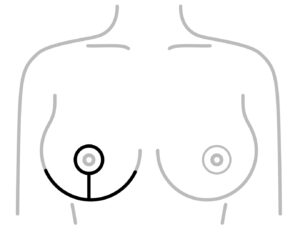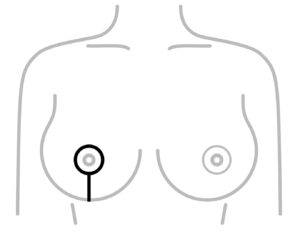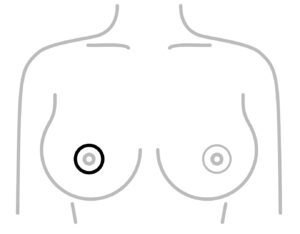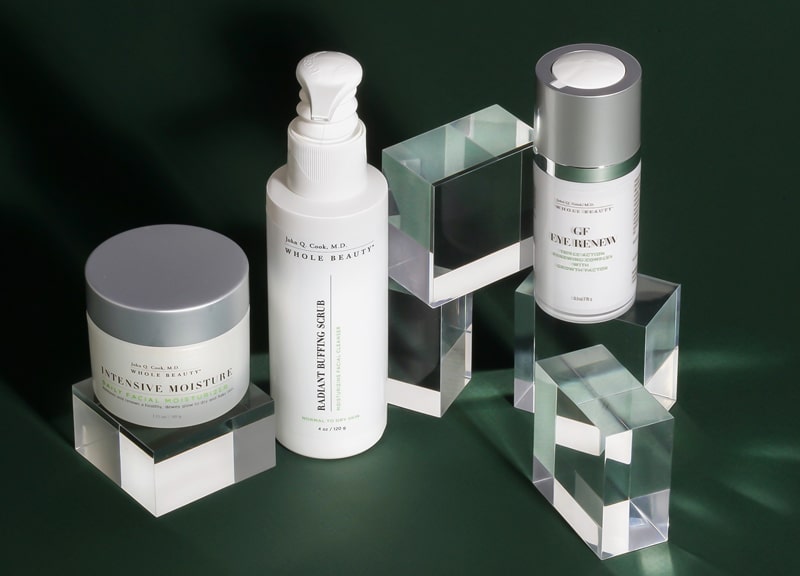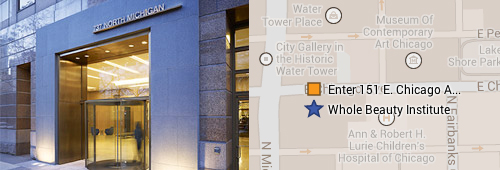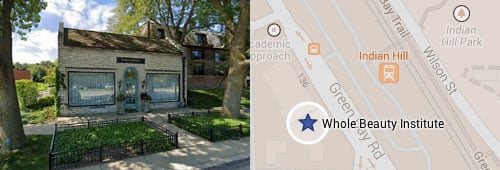Why Dr. John Q. Cook Is the Right Breast Surgeon for You
Breast Lift is one of Dr. Cook’s favorite procedures. Having developed the Structural Breast Lift Technique, he can help his patients to obtain lift as well as create a pleasing breast shape often without implants.
Dr. Cook has lectured about the Breast Lift Surgery at national and international meetings and offers patients various breast lift techniques that he can apply on an individualized basis.
Dr. Cook performs a detailed analysis based on unique goals and what he finds during the physical exam. His overall goal for every patient is to improve the artistic balance of the body, but also improve body mechanics.
The three main advantages of the Structural Technique: Use of your own tissue to restore volume to the upper portion of the breast. Anchoring at several levels so the stretched-out skin does not do all the work of lifting. Minimizing scars.
Education and Credentials

Awards and Recognition

REAL PATIENT RESULTS
See the difference experience makes. View the full before & after photo gallery of Dr. Cook and his team.
Breast Lift
Enhance the Shape, Contour, and Position of the Breasts with Mastopexy in Chicago and Winnetka
Aging, pregnancy, and other factors can cause the breasts to descend over time to a lower position on the chest wall. Happily, there’s an effective way to address this sagging while restoring a more youthful shape and position of the breasts. A breast lift at the Chicago-based practice of Dr. John Q. Cook can restore a perkier, more aesthetically pleasing shape to the breasts and restore volume to the upper portion of the breasts.
Breast Lifts Options for Patients
Patients come to the Whole Beauty® Institute for breast lift surgery with a variety of goals, Dr. Cook believes it is important to offer a wide range of choices for the surgery. That way, he can work with individual patients to achieve a truly individualized solution to each unique problem.
With that in mind, there are several advanced breast lift techniques to choose from, each focusing on different breasts and patient goals. Dr. Cook will choose the most appropriate technique for you based on your breast size and shape, the level of sagging you are experiencing, your skin elasticity and quality, and the size and position of the areolas, as well as other factors.
Consider all of this, you may be wondering, “What are the different techniques for a breast lift?” or “What are the different types of breast lifts?”
Structural Breast Lift (Structural Mastopexy)
This is Dr. Cook’s prefered technique for breast lift surgery given the many advantages it offers patients. The structural mastopexy technique allows for a rearrangement of breast structure so that the upper part of the breast is filled with natural breast tissue. With this breast lift operation, the scar runs around the areola, down toward the fold, then curves off to the side along the undersurface of the breast.
Structural Lift Before and After
Hover over image to view results. Warning, the images contains nudity.
Before and after of Structural Breast Lift with no implants.
Learn More about Structural Breast Lift
Visit the Structural Breast Lift Page to read in depth information, watch educational videos, and view a surgical technique animation about this innovative procedure developed by Board-Certified plastic surgeon Dr. John Q. Cook.
Classical Breast Lift (Anchor)
For patients who have severely settled breasts, the classical operation may offer significant benefit. As with the other types of breast lifts, this surgery may be combined with breast implants to provide better upper pole structure and increased volume.
For many years, this was the dominant breast lift technique in the United States—and still is probably the most commonly performed technique for breast lift. Essentially, the skin is used as a brassiere to lift the breast by removing excess skin from along the fold under the breast, as well as around the areola and along a line that runs from the fold under the breast to the bottom edge of the areola. This produces a scar that somewhat looks like an anchor.
The classical breast lift operation is a good alternative for some patients, although Dr. Cook now uses it much less frequently than he did in the past. It has two main disadvantages: relatively long scars along the fold under the breast and its reliance on tightening the skin as the main mechanism for lifting the breast. With this operation, the skin is tightened in vertical and horizontal directions.
Like tailoring an outfit, this breast lift surgery involves taking a vertical “dart” by removing a segment of skin in the midline of the breast and a horizontal “dart” by removing skin along the fold under the breast. The nipple and areola are moved to a higher position on this tightened breast. Many very good plastic surgeons use this breast lift technique, although Dr. Cook has noticed a trend toward an increasing number of vertical lifts.
Classical Lift Before and After
Hover over image to view results. Warning, the images contains nudity.
Before and after of Classical Breast Lift combined with High Lateral Tummy Tuck.
There are some patients for whom Dr. Cook recommends variations of the classical breast lift. In patients with an extreme degree of looseness of the skin, such as might occur with massive weight loss, the combined horizontal and vertical tightening can be of benefit—even though it means accepting the scar along the fold in the inner portion of the breast.
Another possible variation is adding volume at the same time as achieving a breast lift. For many years, breast lift surgery in the United States consisted of a tightening of the skin. Over the short term, this will lift the breast structure, but skin-lifting techniques have three disadvantages: People who need breast lifts often have stretchy skin, so the breast tends to stretch again; the only lift is at the skin level, so there is no deeper support of the breast structure; and, very often, the area of the breast that is most in need of volume is the upper portion of the breast. This is the first area to hollow out after a skin lift, since the breast structure descends as the lower curve of the breast stretches out again.
Because of these issues, many surgeons routinely use breast implants with their breast lifts so the device will partially compensate for the limitations of breast lift surgery by keeping some fullness in the upper pole.
If you are considering breast lift surgery, the first decision you need to make is whether a breast lift alone will satisfy your goals or whether you need to add volume with implants. Are you reasonably happy with the shape of your breasts when they are supported by an uplifting bra without padding? If so, a breast lift without implants may very well achieve your goals.
Here is a simple visual test that will help you determine the best option for your situation: Stand in front of a mirror and look at your unsupported breasts from several angles. Next, gently push your breast upward with one hand so that it no longer hangs over the fold. Look at the supported breast from several angles. If you think that the breast seems to be reasonably full, then a breast lift without implants may work well for you.
Vertical Breast Lift (Lollipop)
This breast lift procedure was developed largely in France and Brazil. American surgeons were reluctant to accept it, but the technique has become much more popular in recent years.
Skin is tightened along a vertical line that runs from below the areola to the lower portion of the breast. A circle of skin is removed from around the areola and skin is also removed from the midline of the lower breast. The resultant scar to some people resembles a lollipop, hence the term “lollipop breast lift.”
Vertical Lift Before and After
Hover over image to view results. Warning, the images contains nudity.
Before and after of Vertical Breast Lift with submuscular breast implants.
This technique tends to create a bunching up at the bottom end of the scar. This is either allowed to “settle in,” or a circle of skin is removed and tightened down with a purse string suture. What confuses many patients is that the scar is only part of the procedure. Sometimes the breast lift just consists of skin removal, in which the procedure is conceptually similar to the classical mastopexy—using skin to lift the breast. Sometimes internal work is done on the breast to provide reinforcement of the lift. If you are considering this type of lift, make sure you understand what is being done beneath the surface.
In Dr. Cook’s practice, the vertical breast lift was a predecessor to the structural breast lift. Most variations of this operation do not provide as powerful an anchoring of the breast tissue as the structural breast lift accomplishes.
Vertical breast lifts also do not typically allow for an effective restoration of volume in the upper portion of the breast. The appeal of the vertical lift is that it largely avoids the scar that runs along the fold under the breast.
In one variant of this breast lift operation, Dr. Cook can utilize a portion of the breast structure to restore volume in the upper pole of the breast. In select patients, this can allow for the restoration of a pleasing breast form without the use of implants. With more significant loss of upper pole structure or with patients who desire an increase in breast volume, a saline or silicone gel implant can be used as part of the breast lift procedure.
With greater degrees of lifting, there may be the disadvantage of a puckering of tissue at the lower end of the vertical scar. With the structural breast lift, the tone of the lower aspect of the breast is better controlled.
Periareolar Breast Lift Surgery (Donut)
This technique for breast lifts is appealing in concept because it limits the scar to a line that runs around the border of the areola. The idea is to remove an oval shaped area of skin from around the areola so that when the skin at the edge of the oval is sewed to the smaller circle formed by the areola, a tightening and lifting will occur. The big problem with this breast lift technique was that the scars tended to spread because of tension.
Dr. Louis Benelli of Paris made a wonderful breast lift contribution when he suggested weaving a purse-string suture under the skin at the border of the oval. When this is tightened and a knot is placed, it brings the big oval down to the size of the smaller circle, so that healing can occur without excessive tension.
This breast lift technique is well-suited to patients with smaller to midsize breasts that have developed a mild degree of settling after pregnancy or weight loss. The result may be enhanced by the placement of a saline or silicone gel breast implant in the plane that is appropriate for that patient’s needs (under the breast or under the breast and the pectoral muscle). In some patients, volume can be added with a fat transfer.
There are some patients who just want a mild breast lift result and don’t want any scars except those around the areola. For them, the periareolar breast lift can be a reasonable option. It is possible to extend the power of this operation with a wider undermining of the skin and a tightening of the breast structure in the lower portion of the breast, but even then the operation is not as powerful as other types of breast lift. For some patients, the power of this approach can be enhanced with the BodyTite® procedure.
Periareolar Lift Before and After
Hover over image to view results. Warning, the images contains nudity.
Before and after of Periareolar Breast Lift with breast implants.
It is important to realize that this technique does not provide a powerful lift.
There is one other aspect of the periareolar breast lift that deserves mention: In breasts that have an overly pointed shape, the operation naturally diminishes the projection of the central part of the breast and rounds out the breast shape. For some patients, this is a significant benefit. One situation where Dr. Cook takes advantage of this aspect of the periareolar mastopexy is when he is trying to match the shape of a reconstructed breast by sculpting the opposite natural breast, since a reconstructed breast does not project as much as a natural breast.
In Dr. Cook’s experience, this breast lift technique provides a reasonable degree of long-term satisfaction when the breast is not too large and where an extremely powerful lift is not desired.
Frequently Asked Questions about Breast Lift Surgery
What Is a Breast Lift?
A breast lift or mastopexy is designed to lift or elevate the breasts and restore a shapelier, perkier, or more youthful appearance. The surgery balances the breasts and restores them to a higher position on the chest. It involves reshaping the breasts by removing excess or stretched skin and tightening the surrounding tissues that provide support for the breasts.
Breast lift surgery improves the volume, shape, and firmness of the breasts via various techniques. By restoring a more youthful-looking and elevated bust, breast lift surgery can rejuvenate your figure. Each breast lift at Whole Beauty® Institute is tailored to address a patient’s personal concerns and adapted to fit their unique lifestyle.
What Are the Benefits of Breast Lift Surgery?
Breast lift surgery has many benefits for patients, including results that are visible right away. The breasts appear younger and perkier when they are restored to a more natural, feminine, and elevated position. Additionally, your bras and other clothing may fit you better after the surgery.
There are several potential benefits from breast lift surgery that go beyond the considerable aesthetic improvements a well performed mastopexy provides. Patients typically seek breast lift surgery in Chicago due to common factors such as aging, weight fluctuations, and pregnancy. Some patients who have had sagging breasts since their teen years can achieve the perkier breast profile that they have always wanted for the first time.
Why Would You Need Breast Lift Surgery?
When breasts are significantly settled, the drooping negatively impacts body mechanics. Certain types of exercises become uncomfortable, and the problem may even contribute to back pain. This is particularly true if the breasts are asymmetric. It is possible to compensate for this imbalance with aggressive support bras, but these undergarments can be very uncomfortable in their own right—especially as the day progresses. For some patients, the tight, restricting bras that are necessary to lift and properly support the breasts are uncomfortable.
What Are Some Reasons Why Women Choose Breast Lift Surgery?
Each patient’s reason for choosing a breast lift is personal. Dr. Cook takes motivations and goals into account when developing a customized plan for each patient.
Dr. Cook has seen patients who, after years of not taking care of themselves, restore their health and well-being through a positive program of nutrition, exercise, and stress reduction. Some of these patients tell him that by restoring a beautiful breast shape with a breast lift, they are celebrating their new body. If you feel good about how you look, you are more motivated to invest the time and energy to maintain your good appearance.
Many of Dr. Cook’s breast lift patients tell him that their physical comfort and freedom of motion increase after the surgery. The correction of severely settled breasts can also remove a “roadblock” to maintaining excellent habits of nutrition and exercise. Patients can become frustrated when an area of the body does not respond well to a program of diet and exercise. Over time, this lack of response can cause people to slip away from their good habits. The restoration of the breasts to a beautiful form and proper position can initiate a positive feedback cycle.
Some breast lift patients tell Dr. Cook that it is mainly a matter of returning their breasts to the beautiful shape they used to have. Others say the key issue is a lack of fullness in the upper portion of the breast, which restricts their choice of clothing and swimsuits. There are also women who find that as their breasts settle, they become increasingly asymmetric and unbalanced—or their breasts have been settled ever since they first developed. These patients may become self-conscious about their breasts, and their breast position can even have an effect on their posture and back comfort.
Breast lift surgery after pregnancy deserves particular mention. Women make tremendous sacrifices in the process of bringing children into the world (not to mention what comes after). For a woman whose breasts have been altered by pregnancy, a breast lift can be a positive affirmation of her sensuality.
Who Is a Good Candidate for Breast Lift Surgery?
A question that you’ve probably been wondering about if you’ve considered breast lift surgery is, “How do you know if you’re a good candidate for a breast lift?” Similarly, you may be wondering, “What is the best age to get a breast lift?”
First, it is important to note that breast lift patients should have the procedure done solely for themselves—rather than to please someone else. In most cases, the ideal candidates for a mastopexy will be adults who are in good physical health, maintain a stable weight, do not plan to have children in the future, and are non-smokers. They may have concerns about drooping or sagging breasts, as well as stretched skin or nipples that fall below the breast crease and point downward.
Breast lift candidates often feel like their breasts sag, have lost their volume or shape, have developed a flattened or elongated shape, have stretched skin or enlarged areolas, are asymmetrical, or one falls lower than the other.
Many mastopexy candidates have noticed that their breasts have begun to sag because of aging, pregnancy, or after significant weight loss. Breast lifts are not recommended for patients who are pregnant or breastfeeding.
How Do the Different Breast Lift Techniques Affect Breast Shape?
The periareolar breast lift provides a mild lifting of the breast structure and diminishes the projection of the central portion of the breast underneath the nipple and areola. The ideal patient for this operation is a woman who desires a mild naturalistic lift and who is not overly concerned with volume in the upper portions of the breast, particularly if she places a high priority on minimizing scars. This breast lift can be especially helpful to a woman with pointed breasts who wants to diminish their projection and round out breast shape.
The classical or anchor breast lift is helpful to patients with a great degree of loose hanging skin in the lower portions of the breast. This often occurs in patients who have lost very large amounts of weight, but Dr. Cook sometimes see this problem in patients who have undergone several pregnancies. There are limits in terms of restoring volume to the upper portions of the breast.
The structural mastopexy offers the greatest ability to control breast shape. It is particularly helpful for patients who want to restore fullness in the upper portions of the breasts, especially if they want to avoid breast implants. It also provides a good restoration of a firm breast structure.
Some breasts tend to get spread out over time with a widening of the breast base and a tendency to spill over the side of the chest. The structural mastopexy technique can help to address these problems.
How Do You Prepare for a Breast Lift?
Before having breast lift surgery, patients may need to get lab testing or a medical evaluation. In some cases, they may also need to take certain medications or adjust how they’re taking current medications. You may need to have a baseline mammogram before and after the breast lift procedure. It’s important that patients stop smoking and avoid taking aspirin or other medications or supplements that thin the blood in advance of their procedure.
What Is the Recovery Like After a Breast Lift?
Dr. Cook makes use of a long-acting local anesthetic, so pain is well controlled with standard prescription pain medications for most patients. In general, if a breast implant is part of the procedure, there will be a greater degree of discomfort in the first few days after breast lift surgery.
Exparel, an ultra long acting local anesthetic, provides excellent pain control in most patients for the first 72 hours after surgery.
The breasts are protected by a fluffy dressing that is covered by a gentle stretch bra in the days following surgery.
Patients are delighted to learn that Dr. Cook almost never uses drains with his breast lift surgeries. This makes the recovery more comfortable.
Breast lift patients typically come for their first post-operative visit at either our Chicago or Winnetka facilities three or four days after their surgery. At that time, the dressing is removed, and the patient is fitted with a gentle support brassiere.
How long does it take to feel normal after a breast lift? Most patients can return to normal light activity in less than a week after the procedure, but heavy lifting and vigorous exercise should be avoided for four to six weeks. Patients with young children should make arrangements for help with childcare for the early weeks after surgery. What is the fastest way to recover from a breast lift? We can provide each patient with specific recommendations that depend on the extent of her procedure.
Where Is the Breast Lift Surgery Performed?
If the breast lift is part of a reconstructive procedure, the surgery will be performed on an outpatient basis at either Rush University Medical Center or at a private surgicenter a few blocks from our North Michigan Avenue office. If the breast lift is for aesthetic or cosmetic reasons, the surgery is usually performed at the surgicenter. Depending on its complexity, the surgery will take from two to five hours.
Most patients are able to leave the surgical facility in less than an hour after the breast lift procedure is completed. Patients from the Chicago metropolitan area usually choose to recover at home. Patients from out-of- state will recover at a fine hotel near our office. We can arrange to have one of our highly-experienced caregivers stay with you for one or several nights.
What Are the Results and Long-Term Outlook for a Breast Lift?
You might have questions about what to expect after the procedure, such as, “How long does a breast lift last?” “When will you see results from a breast lift,” or “Will breasts sag again after a breast lift?”
The results from a breast lift will be instantly visible right away, but will also continue to evolve. As you gradually recover from a breast lift, your satisfaction with your results should increase. The results finalize within several months. Although the breasts will still be affected by aging and gravity, the results are long-lasting. In fact, they should last for years—and there are things patients can do to keep them looking their best.
Maintaining a stable weight and a healthy lifestyle will help to ensure that mastopexy results last for as long as possible. Pregnancy and major weight fluctuations can affect your results. When you exercise, you should wear an athletic bra for support, and it is a good idea to wear a soft structured bra most of the time.
Why Choose Dr. John Q. Cook for Breast Lift?
As an experienced breast surgeon who has helped many women achieve beautiful, natural-looking results with breast lift surgery, I have a wide range of mastopexy techniques at my disposal. During your breast lift consultation at my Chicago or Winnetka center, I will carry out an in-depth evaluation in order to advise you as to which technique is most appropriate for your needs. I will obtain a sense of your preference for breast shape and volume and also pay careful attention to your habits of exercise and weight fluctuation, all of which may affect the surgical outcome.
I refined my techniques of mastopexy in the demanding field of breast reconstruction, where the surgeon must often sculpt, lift, or modify the shape of the natural breast in order to obtain a pleasing harmony with the reconstructed breast.
Early in my career, I recognized the potential for innovative techniques that were developed by colleagues in Europe and South America, which allowed for shorter scars than the traditional breast lift procedure that was practiced in the United States. From a conceptual standpoint, these procedures also had an advantage of relying on more than the skin to lift the breast. In general, these techniques rely upon an internal tightening of the breast structure to provide and maintain the power of the lift.
The breast lift surgeries that I perform for patients at my Chicago and Winnetka centers have a variety of components that can be customized to each individual’s needs. From the patient’s perspective, they can be viewed according to the location of the external scar.
In the periareolar mastopexy, the scar is confined to the border of the areola. This technique is often combined with the placement of an implant and with modification of the breast structure to enhance internal support.
The vertical mastopexy involves a scar around the areola, as well as a vertical extension from the lower border of the areola to the fold under the breast.
The structural mastopexy technique—my preferred choice—allows for a rearrangement of breast structure so that the upper part of the breast is filled with natural breast tissue. With this breast lift operation, the scar runs around the areola, down toward the fold, then curves off to the side along the undersurface of the breast.
The classical mastopexy involves a scar along the fold under the breast as well as a vertical and periareolar component.
Alternative or Combination Procedures to Enhance the Breasts
Dr. John Q. Cook and the Whole Beauty® Institute offer a complete range of breast-related cosmetic surgeries. A breast lift on its own will not significantly increse the size of the breasts. Breast augmentation with breast implants and fat transfer adds volume and fullness to increase the size of the breasts. A breast reduction reduces volume from the breasts to improve their appearance, balance, and body mechanics.
A breast augmentation with lift is an option for some patients who wish restore lift and increase the breast size. The procedure can address sagging or stretched skin while also adding volume.
If you are concerned about sagging or loss of volume in the breasts but also want to correct sagging skin, resistant fat, or weakened muscles on the abdomen, a breast lift can be performed at the same time as a tummy tuck.
A Mommy Makeover is a combination procedure of a breast lift and a tummy tuck. This procedure addresses sagging or loss of volume in the breasts and corrects sagging skin, resistant fat, or weakened muscles on the abdomen. For some patients it may also include liposuction to reduce stubborn fat.

How Do You Know if You Need a Breast Lift?
Breast sagging, otherwise known as breast ptosis, is a common condition that occurs as your breasts begin to droop over time. Just like any other area on your body, the breasts will go through changes as you age. There are several potential causes, including a loss of...

Answers to the Top Breast Augmentation FAQs: Part 2
The Whole Beauty Institute believes in empowering patients through education, transparency and clear communication. Our website includes other valuable information about breast augmentation, including our pages on ten questions to ask a surgeon during your breast...

When A Structural Breast Lift Makes More Sense Than Implants
When you think of cosmetic breast enhancement surgery, implants are often the first procedure that comes to mind. Breast implants are typically used to increase breast size or improve shape and symmetry. Many plastic surgeons also use implants to restore volume to the...

Plastic Surgery During the Summer Months
At first thought, plastic surgery during the summer months doesn't seem like the ideal time of year. People are mostly headed outdoors to swim, run, bike, and explore. However, more important than the time of year is the amount of time you have to recover from...

Avoiding Implants with a Breast Lift: Structural Breast Surgery
For women the natural aging process brings with it a variety of changes. Your body may become susceptible to the effects of gravity, pregnancy, weight fluctuation, and stress. When your breasts lose their tone and shape, you may be unhappy with the way they look. The...
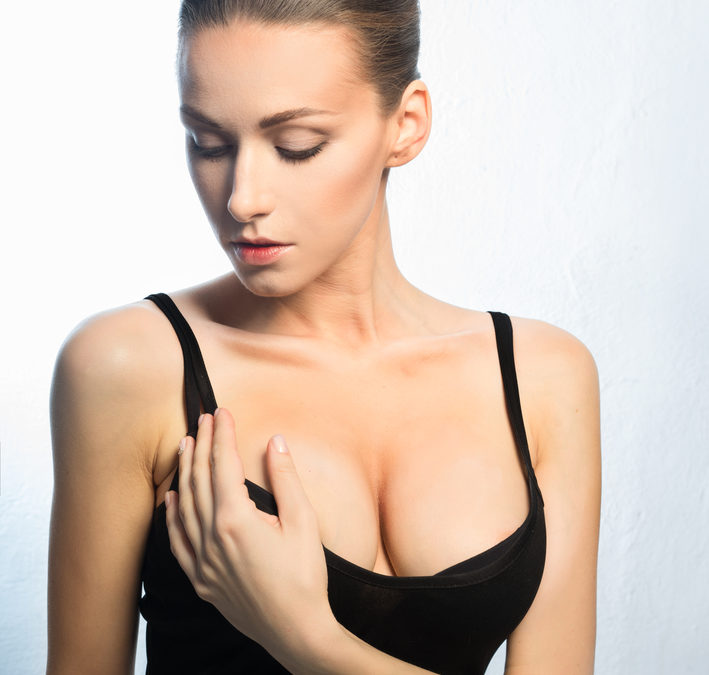
Restore Fullness without Implants
A Breast Lift Technique that Restores Upper Breast Fullness without Implants Many plastic surgeons routinely place breast implants as part of the breast lift (mastopexy) operation. They do this to provide fullness in the upper portion of the breast after surgery. Many...
Practice Blog
Learn more about Dr. John Q. Cook and the non-surgical treatments and plastic surgery procedures available at The Whole Beauty® Institute. Get tips and advice, discover new ways to improve your health and beauty, and more.
Dr. Cook's HealthGems Blog
Dr. John Q. Cook shares his personal thoughts on well-being, quality of life, and more—all drawn from his decades of experience in the industry, studying and working with advanced technology and techniques.
Whole Beauty Skincare
SkinShopMD was created by board-certified plastic surgeon John Q. Cook, M.D. as a trusted source for skin care products. From his years of experience, he developed a portfolio of high quality medical grade products to protect and rejuvenate your skin.

Educational Information
Learn important information about surgical and non-surgical procedures to help you make informed decisions about your desired treatment based on your goals. Topics cover facial surgery, injectables, lasers, breast surgery, body contouring, and other treatments.
Testimonial and Practice Videos
Schedule a Consultation
Schedule a consultation with board-certified plastic surgeon, John Q. Cook, M.D., to learn more about plastic surgery solutions that may be right for you based on your aesthetic goals.
"*" indicates required fields
Our Office Locations
Our locations in the Gold Coast of Chicago and Winnetka in the North Shore reflect our commitment to convenient and discrete concierge-level service.
Chicago Office
737 North Michigan Ave., Suite 760 Chicago IL 60611 (312) 751-2112 Entrance at 151 E. Chicago Avenue
Winnetka Office
118 Green Bay Road Winnetka IL 60093 (847) 446-7562
Located directly across from Indian Hill Metra Station



